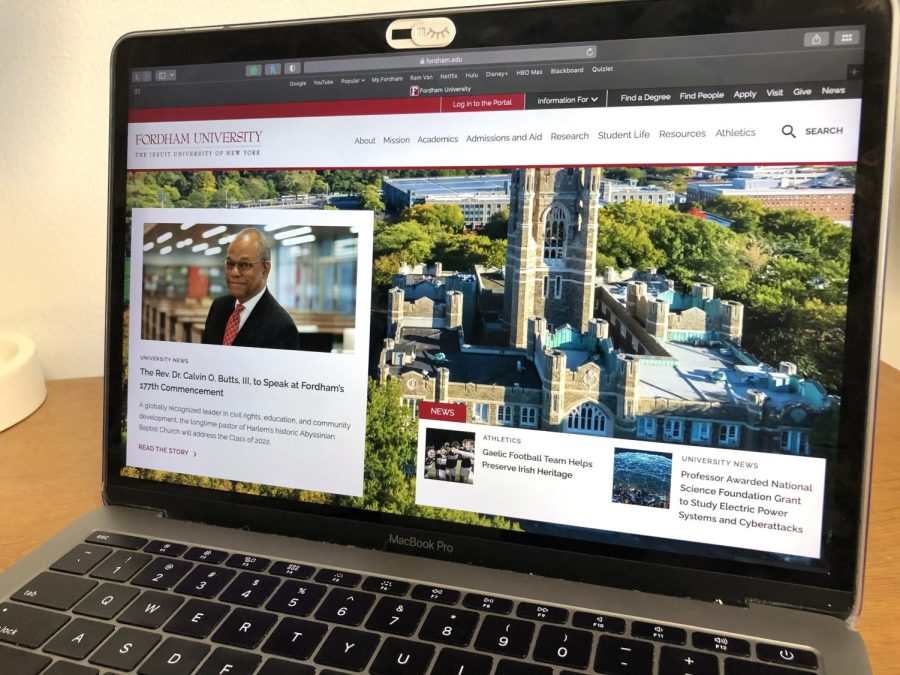Fordham’s Official Website Receives A New Content System
Fordham University is in the process of migrating its official website to a new content management system. The switch is intended to change the management system as well as improve the display of the website’s content and refresh the information presented.
According to Fordham’s website, the migration will likely not alter the appearance of most of the university’s web pages.
“While we will not be undergoing an entire redesign, we will be reorganizing, updating images, adding new content types (previously known as widgets and supplements), etc. The look and feel will be similar but refreshed,” said a “FAQ” on Fordham’s website.
Donna Lehmann, assistant vice president for marketing, said that the university decided to switch the website’s content management platform from Jadu to Terminalfour. Lehmann noted that the university also decided to use the transition of management companies to refresh the information currently on the website.
Terminalfour is a digital management system that advertises its services to higher education institutions specifically. They claim to be able to help schools, colleges and universities increase their websites’ effectiveness.
Terminalfour advertises that they have succeeded in helping universities boost student recruitment, increase staff and student online engagement and manage content on websites.
“[Terminalfour] is more widely utilized at colleges and universities and will give us greater flexibility in design and architecture. It’s also easier for our web editors in all the various academic and administrative offices across campus to use which means they will be able to create better web experiences for students,” said Lehmann.
It is important for universities and colleges to have dynamic and easy-to-use websites. Studies have found that many times prospective students will only use the information from institutions’ websites to decide whether to apply or not. Even though social media’s importance has grown significantly, students still rely on websites as a “one-stop shop” for university information over the use of social media pages. That all goes into why it is essential for universities to make sure that their websites are up to date and enticing.
The entire migration began on Dec. 14 and has been done through various steps. Rather than adapting the entire website to Terminalfour at once, the process has been done step-by-step, focusing on migrating specific departments.
“We have currently completed most of the schools, undergraduate admission and aid, student life and mission but have the academic departments and many administrative offices remaining. The transition also entails retraining hundreds of web editors that sit in these areas on the new system, which is no small task,” said Lehmann.
Web pages that have already been launched include Fordham’s student portal, the university home page, Fordham College Rose Hill and Lincoln Center, Gabelli School of Business and admissions and aid. Looking into the future, web pages related to Fordham’s Graduate School and study abroad, have yet to migrate and launch.
Training to faculty on how to use Terminalfour has been offered after their department’s migration was completed. The process also includes a combination of both manual and automated migration. The university created an auto-migration system that has been used on some of the university’s webpages, while others had to migrate manually.
As a part of the university’s content update, different departments had to review the information they had presented online. Content could either be classified as keep, revise or merge or archive. The goal of revisiting information goes with the migration goal of updating and refreshing content. According to Fordham’s website, “analyzing existing web content is an essential task, as it helps to identify out-of-date and irrelevant information and to identify material that we should rework to make it more user-friendly and effective.”
“Our vision for the website is to create a ubiquitous digital experience where content is more customized to the user, where upon logging in, a student is delivered content that is personalized to them — their major, their school, their services,” said Lehmann.
“The new Terminalfour content management system is the first step toward that goal and we will work over the coming year to complete the migration and then focus on refining the personalizations.”
Once the finishing touches are finally rolled out, the new website will be the start of a modern era for Fordham University, aligning it with other universities of the same magnitude and caliber. Lehmann is excited for the university to experience the website’s new design in its entirety.
Updates on the migration can be found on Fordham’s website.

Isabel Danzis is a senior from Bethesda, Md. She is double majoring in journalism and digital technologies and emerging media. The Ram has been a very...










































































































































































































